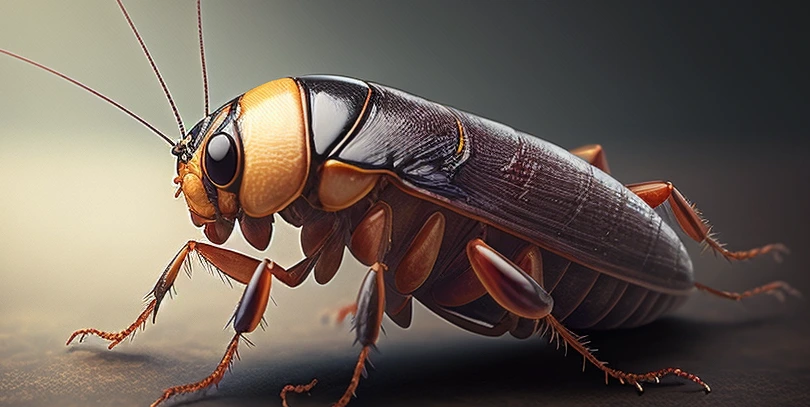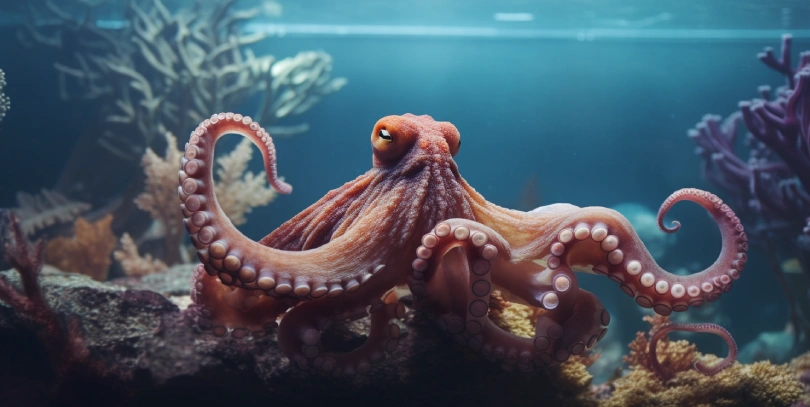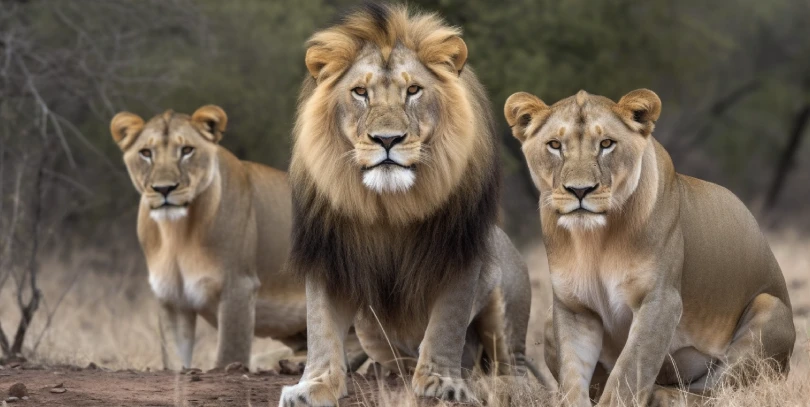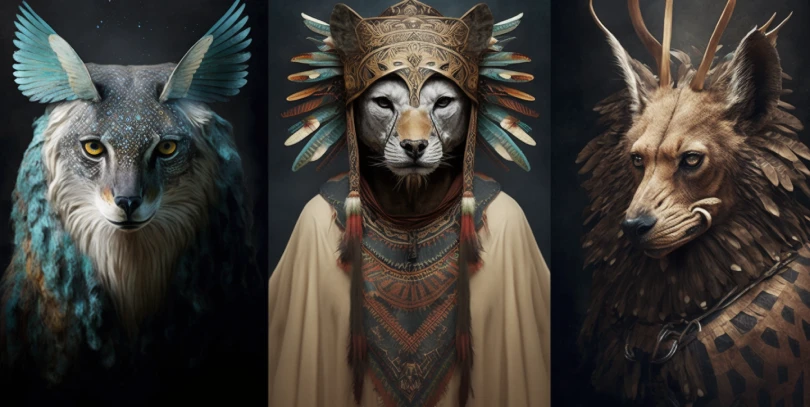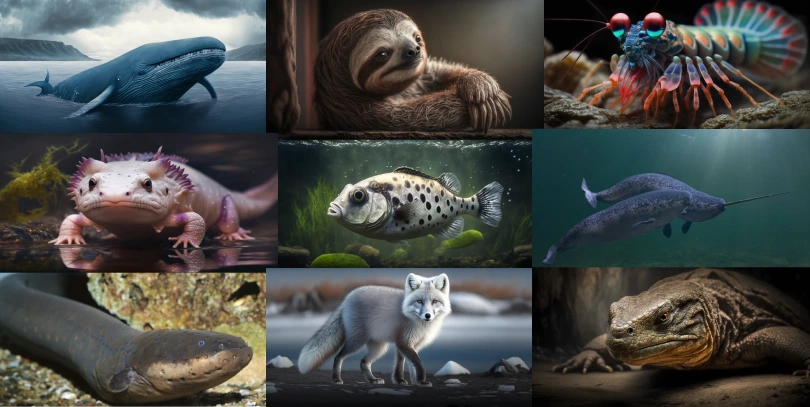Cockroaches are among the most resilient creatures on Earth, having survived for millions of years and withstanding even the harshest environmental conditions. But there’s more to these amazing insects than just their ability to survive! In this article, we will be exploring some of the incredible facts about cockroaches that you may not have known. From their impressive physical abilities to their fascinating anatomy and behavior, there is a lot to learn about these often-overlooked animals. So get ready to explore some truly amazing facts about cockroaches!
1. Cockroaches Have Been Around for Millions of Years
Cockroaches are one of the oldest living creatures known to us, having existed for around 360 million years! Their fossil records can be found in the Carboniferous Period which is prior to when the dinosaurs were present. This shows that cockroaches have been around for a very long time!
2. There are over 4,000 species of cockroaches in the world
Cockroaches are highly resilient and can be found in almost every corner of the world. There are more than 4,000 species of them that have adapted to a variety of habitats – from tropical forests to deserts and even inside homes. Their adaptability is impressive and they can survive in many environments.
3. The World’s Largest Population is in the Sahara Desert
With its arid climate and lack of natural predators, the Sahara Desert offers the perfect conditions for a large population of cockroaches to thrive. As a result, it has become one of their main habitats. During the 1970s, a new type of cockroach was discovered in the Sahara Desert – appropriately named the desert cockroach.
The desert cockroach is a tiny animal, measuring around 15mm (males) and 18mm (females). They have evolved to thrive in the extreme temperatures of the desert, surviving temperatures as low as -15°C and as high as 45°C.
Surprisingly, the Sahara Desert is home to over 100 million cockroaches. These creatures can be found thriving in the dunes, vegetation, and other areas where they have access to food and water.
4. Some cockroach species can fly
While most cockroaches have wings, not all species have the ability to actually take flight. There are four main species of flying cockroaches: Asian, Australian, American, and Smokybrown cockroaches. Many species of cockroaches are able to fly due to their disproportionate wings; larger hind wings and smaller front wings. They possess impressive aerial agility, capable of flying up to 3.4 mph (5.4 km/h) over short distances. They can also glide over longer distances, and even have the capability of carrying out rapid ascents and descents. While it is rare for flying cockroaches to establish permanent colonies in buildings, they are not uncommon on ships, where their populations are often much greater than on land.
5. Cockroaches can run up to three miles per hour
Cockroaches are among the fastest insects on the planet, capable of running up to three miles per hour. This is much faster than the average human walking speed, which is typically around two miles per hour. Cockroaches have six long, thin legs that are adapted for speed, allowing them to quickly move away from predators and flee from potentially dangerous situations.
But what’s even more impressive is that cockroaches have been observed running even faster than this when confronted with a life-threatening situation. This speed is known as the “escape reflex”, and it’s a remarkable ability that has allowed cockroaches to survive for millions of years.
6. Cockroaches are also the best jumpers among insects
Cockroaches have developed an extraordinary jumping skill that permits them to swiftly escape from potential danger. Cockroaches demonstrate remarkable capabilities by jumping 15 times their body length in less than a 1/100th of a second. This impressive strength and agility have allowed them to survive in different conditions, making them one of the most resilient creatures around.
7. Cockroaches play a valuable role in the ecosystem
Cockroaches are known to feed on a variety of things, including plant material like fruits and vegetables, stored grains, dead animals, and even their waste. Cockroaches play a key role in the environment by breaking down decaying organic matter and converting it into smaller pieces of material, which can then be reused as food by other organisms. By doing this, they help maintain ecological balance.
Cockroaches offer more than just a problem for homeowners – they actually have beneficial roles in the environment. They provide food to other animals such as birds and lizards and also help spread the seeds of plants aiding in their growth and reproduction. Additionally, they help aerate the soil too, helping plants to better absorb nutrients and moisture from it.
Cockroaches play a crucial role in our environment due to their various activities. They help maintain the balance of nature and are an integral part of the many food webs in which they exist.
8. Cockroaches Can Eat Almost Anything
Cockroaches have an amazing capacity for resilience – having survived on the planet for millions of years. They are highly adaptable and can survive in a wide range of habitats due to their ability to eat almost any kind of food. This is one of the main reasons why they thrive so well.
Cockroaches are known to consume a variety of items such as plants, fruits, other insects, feces, decaying materials, and human food droppings. This resilient insect can digest a diverse range of food including paper products like leather, glue, soap books, and even decorations like paint or wallpaper. This is because cockroaches have an incredibly efficient digestive system that enables them to break down and process.
Cockroaches feed on a variety of other insects, such as beetle and wasp eggs, caterpillars, grubs, and snails. In some cases, they may even hunt and prey on small amphibians like frogs.
9. Some Species of Cockroaches Can Live Without Eating Anything
Cockroaches can survive for extended periods without any food intake. In such scenarios, they rely on the existing body fat reserves for energy, instead of having to look for a source of food externally.
An astonishing ability of some species of cockroaches, such as the American cockroach, is to survive for up to a month without consuming any food. This is possible because they can slow down their metabolism and store energy during this period.
Cockroaches can survive in drought-like conditions with no access to water for up to two weeks by absorbing moisture from the atmosphere and their environment.
10. Cockroaches Are Immune to Some Poisons and Disease
Cockroaches have an incredible ability to survive under harsh environmental conditions that would be fatal to most other animals. This is largely due to their strong immune system, giving them the power to withstand many toxins and illnesses.
Cockroaches have a few distinct characteristics, which make them immune to toxins and pathogens. Their hard outer covering attracts the most attention, as it helps to shield them against hazardous components like insecticides or other poisons found in the environment. Cockroaches possess certain enzymes in their bodies that are capable of breaking down toxins before they can cause any harm. This is an added benefit as it offers protection against hazardous substances.
Additionally, studies have discovered that cockroaches possess a natural resistance to certain bacteria and viruses, making them more efficient at disseminating illnesses compared to other bugs.
11. Cockroaches are nocturnal insects
Cockroaches are nocturnal creatures that become most active when the sun sets. During nighttime, they scavenge for food and water which is why you may see them running in search of a meal over surfaces or walls when you turn off the lights.
Cockroaches typically stay in dark, moist places like under the kitchen sink or around appliances, as they are sensitive to both light and cold temperatures.
12. Cockroaches have very poor eyesight
Cockroaches have very poor vision, likely due to their mostly nocturnal lifestyle. They are typically only able to make out objects that are close by and they rely primarily on their long antennae to detect any changes in movement. Unlike other insects, cockroaches don’t have the ability to focus on objects and must rely on their sense of touch to locate food and mates.
13. The set of antennae in a cockroach is one of the most important organs
Cockroaches have very sensitive antennae that help them sense motion, flavors, and smells around them. This aids them in their exploration of the environment, getting away from harm’s way and searching for food. The antennae play an essential role in the cockroach’s life. Cockroaches use pheromones secreted by other members of their species as a form of identification. This is enabled by the ability to detect these secretions which gives them the information needed for recognition.
14. Cockroaches Have Incredible Sense of Smell and Hearing
Cockroaches are capable of finding smells in their surroundings through the use of their two antennae which are extremely sensitive to even the faintest aroma. They can also hear a wide variety of sound frequencies, from 30 Hz to 50 kHz, more accurately than any other insect. Due to their highly sensitive hearing organs, certain insects are able to pick up on subtle vibrations and sound waves that other organisms would not be able to detect.
15. Cockroach droppings can be used for medicinal purposes
For centuries, cockroach droppings have been used medicinally due to their known benefits. Some cultures even treat asthma with a form of cockroach milk that is said to be quite effective. Cockroach droppings contain a range of compounds with beneficial properties like anti-inflammatory and antibacterial effects. These components are composed of proteins, chitin, fats, and carbohydrates which are good for human health.
Cockroach droppings may offer a potential use in treating skin conditions like eczema, thanks to the lipids they contain.
Cockroach droppings have been used in the beauty industry for various purposes like skin lightening and wrinkle reduction. These droppings are rich in antioxidants which protect the skin from damage caused by environmental factors and toxins.
16. Baby cockroaches can survive without food and water for weeks
Baby cockroaches are incredibly tough and can survive for remarkably long periods of time without food or water. This is unlike most other animals that require a steady supply of both in order to stay alive.
Cockroaches possess unique metabolic techniques that allow them to survive during periods of food shortage. They can reduce their energy expenditure, enabling them to conserve energy and thus stay alive longer.
Additionally, they also have the ability to enter a form of dormancy, conserving energy and avoiding dehydration. During this span of time, the cockroach will rely on its stored fats for sustenance and will not actively hunt for food.
17. Cockroaches can hold their breath underwater for 45 minutes at a time
This is an impressive feat for such small creatures, and it is made possible by their unique physiology.
Cockroaches have high levels of hemolymph, a fluid that works similarly to blood. This makes them capable of withstanding oxygen deprivation for quite some time. Thanks to their unique biology, they can even hold their breath underwater for up to 45 minutes or more.
18. Cockroaches communicate through odorous secretions
Cockroaches communicate through odorous secretions, also known as pheromones. These secretions are used to attract mates, mark trails, and indicate potential food sources. The cockroaches release these secretions from the tips of their antennae and from special glands located on their bodies. The secretions contain various chemical compounds that serve as signals for other cockroaches. These chemicals can be used to identify the species of cockroach, its age and sex, and even its current food preferences.
Cockroaches have been found to use pheromones for many different purposes. For example, when the female is ready to lay her eggs she emits a pheromone that repels male cockroaches away from her. The male cockroach smells this and runs away to find another female which will allow him to give birth.
19. Cockroaches Give Off a Distinctive Smell When Threatened
Cockroaches give off a distinct and pungent odor when they are threatened or disturbed. This odor is caused by the release of chemicals from their bodies, known as “alarm pheromones,” which act as a warning to other cockroaches in the area. The smell of these alarm pheromones is usually described as a musty, sour, or even pungent odor.
20. Male and Female Roaches Bond for Life
Male and female roaches have a unique relationship that has captivated scientists for years. It is well-known that roaches form bonds with one another and often mate for life, but recent studies are beginning to shed light on the exact nature of these relationships.
Scientists have found that male and female roaches are deeply bonded, even beyond the mating process. Their relationship is so strong that when one roach dies, the other will often mourn for weeks, refusing to eat and trying to search for the missing partner. During this grieving period, the remaining roach will even keep its mate’s antennae close to itself as a sign of affection.
Another fascinating aspect of the roach relationship is that female and male roaches will often share food with one another. Roaches are known to exchange saliva as a sign of affection, and this same behavior is seen when they share food. Similarly, they will even groom each other in a similar fashion to mammals.
21. Roaches are also incredibly smart and can learn from one another
Research has shown that when a roach learns something new, it will share this information with its mate so that they both benefit. This behavior is known as social learning and could explain why roaches have been able to survive in such close proximity to humans for thousands of years.
Sources:
